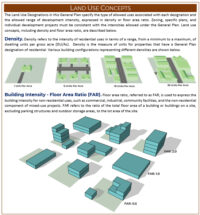The Sonoma Disaster Council is ready to spread the public-preparedness word via website, newsletters, wallet cards, utility-bill inserts and a block party or two – but first, they need a slogan.
“Otherwise, we’re going to default to ‘Get Ready Sonoma,’” city Public Works Director Milenka Bates told the council Thursday. “Somebody’s got to come up with something better than that.”
Bates’ presentation was one of four at the second meeting of the newly formed council, whose 20-odd members represent local government, fire and police agencies as well as schools and service organizations. The council is charged with coordinating the city’s disaster response.
City Manager Linda Kelly showed two bright-red, off-the-shelf disaster kits – a small, soft-sided box containing first-aid supplies for a single person as well as food and water for three days. The second kit, housed in a daypack, contained more extensive supplies for three people and added a toolkit, rope, tape and gloves. The cost ranged from $25 to $129, and Kelly said that, during her tenure as Fairfax City Manager, she had bought one for every city employee to keep in his or her vehicle.
Part of the council’s job is to make sure everyone knows how everyone else will cope when the need arises. Police Chief Brett Sackett displayed a handful of emergency operation plans collected since the council’s May meeting – including from the Sonoma Valley Unified School District, Pueblo Serena Mobile Home Park, the Red Cross, and Sonoma Valley Hospital – and said more would be forthcoming.
Hospital representative Jackie Lyons summed up the facility’s emergency status, saying it had recently passed an 84-point standard emergency accreditation and crafted plans to address the top five most likely large-scale scenarios: earthquake, fire, a hospital-wide utility failure, extremes of heat or cold and a hazardous-material spill. She said a sixth possibility was a general “multi-casualty event,” and added that the strategy behind the planning called for short- rather than long-term aid.
“We have to stress that we are a hospital, not a shelter,” Lyons said.
What an agency can do – and, as importantly, what it can’t – was the topic of Thursday’s main presentation by American Red Cross volunteer John Saguto. Clad in a white cap and orange reflective vest, with multiple cellphones clipped to his belt – “Hopefully, you won’t see me like this, but if you do it’s not trick-or-treat” – Saguto took the council on a PowerPoint tour of the group’s history and capabilities.
“It’s a huge human-resource organization,” Saguto said, explaining that the International Red Cross and Red Crescent Society represented a world-wide assemblage of 185 “Red Crosses” – 90 percent of whose members are volunteers – ready to go into action at a moment’s notice.
However, Saguto said the Red Cross also has its own limitations – it doesn’t provide insurance or long-term shelter, and is neither medical unit, first-responder, or “willing to put its volunteers and staff in harm’s way.”
Saguto also disputed the well-known rule of thumb that potential disaster victims – i.e., the general public – should prepare for three days of self-sufficiency. In the case of a major emergency, especially requiring national coordination, Saguto said it would take that long just to get the rescue trucks moving, and emphasized a five-day wait would be more likely.
“Five days of just hanging on, waiting for help to arrive,” he said. “That’s the breaking point.”
Disaster Council seeks motto
More from NewsMore posts in News »




